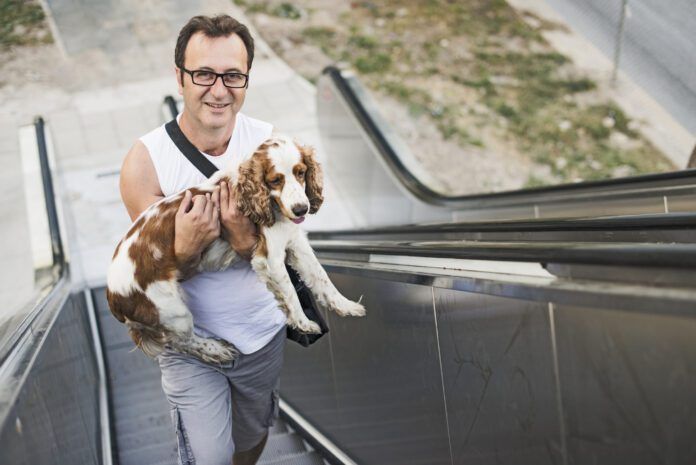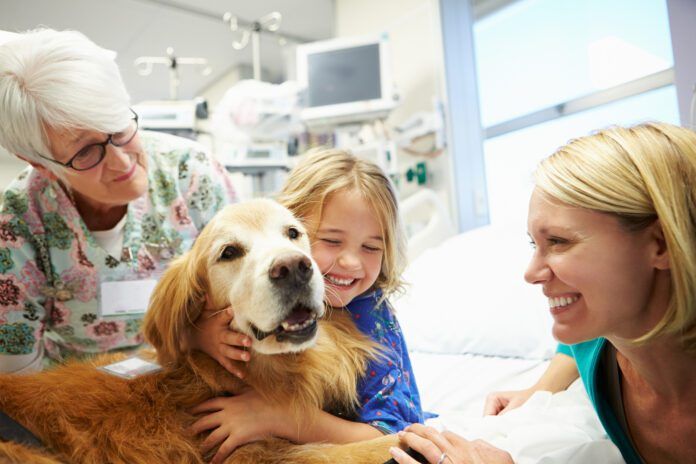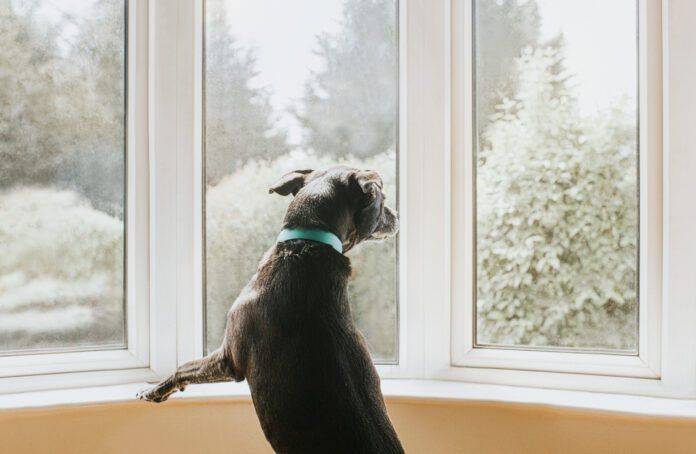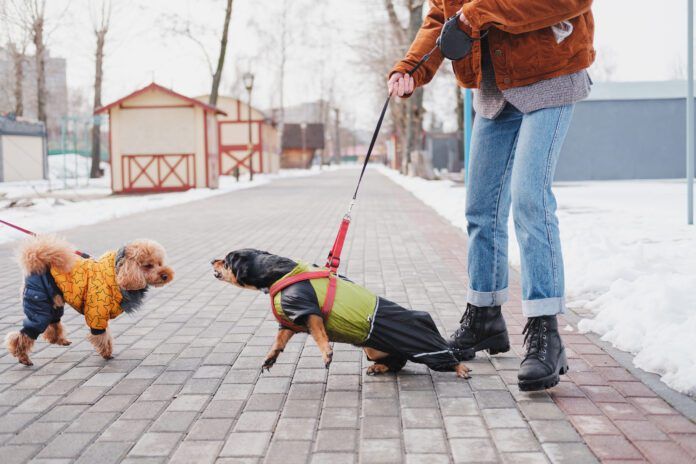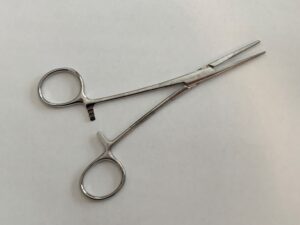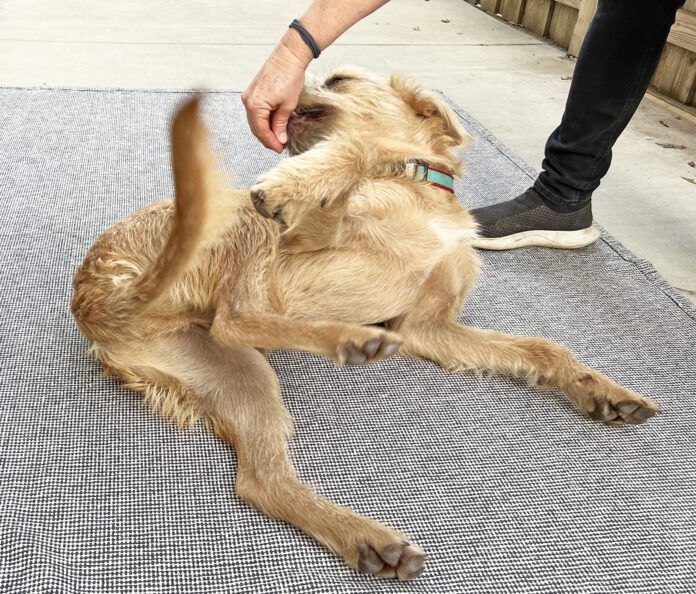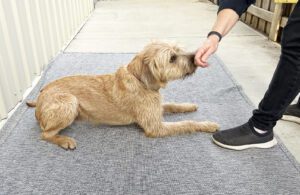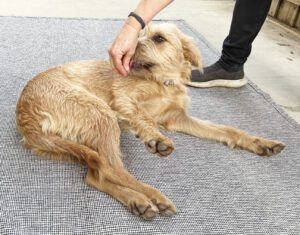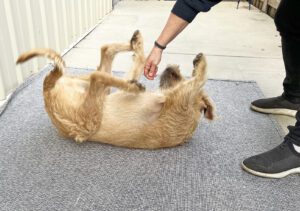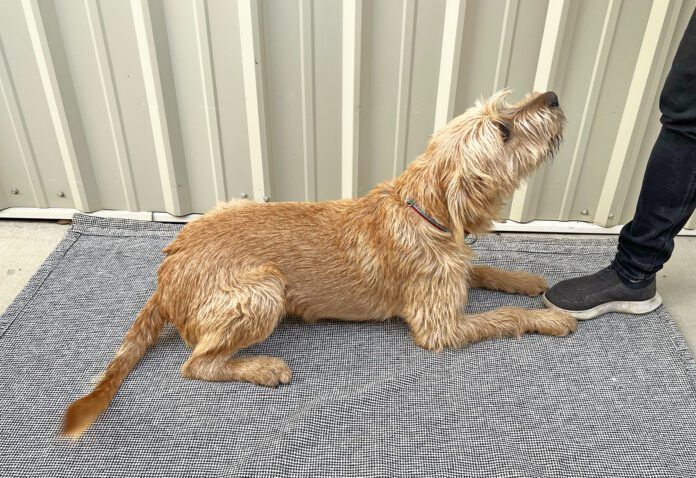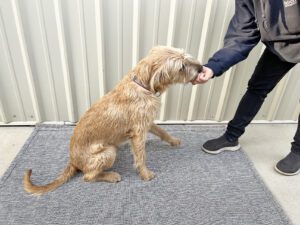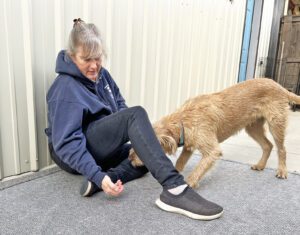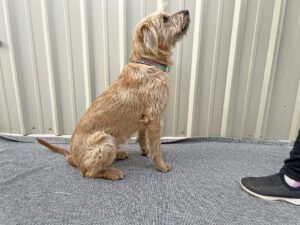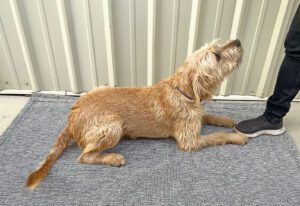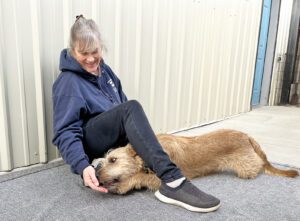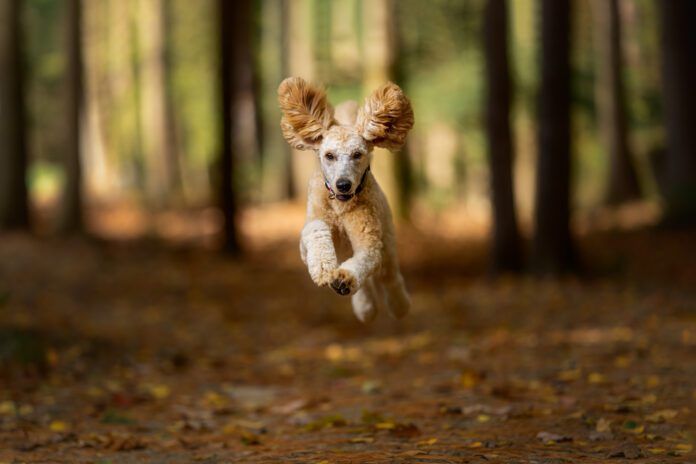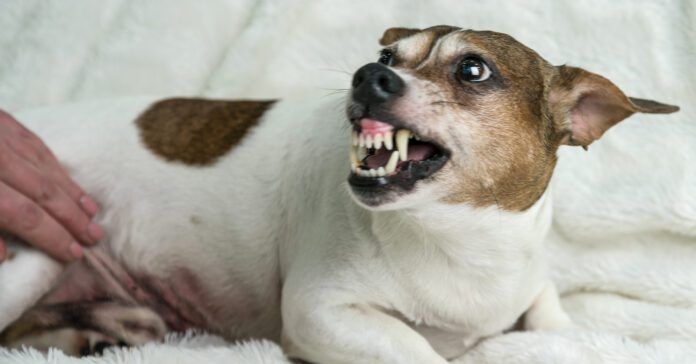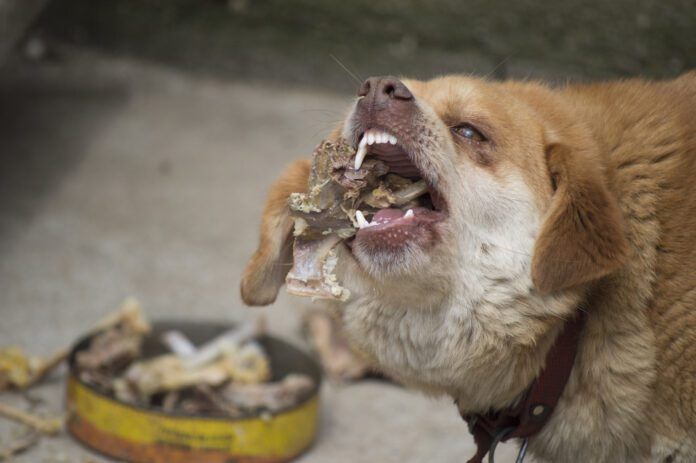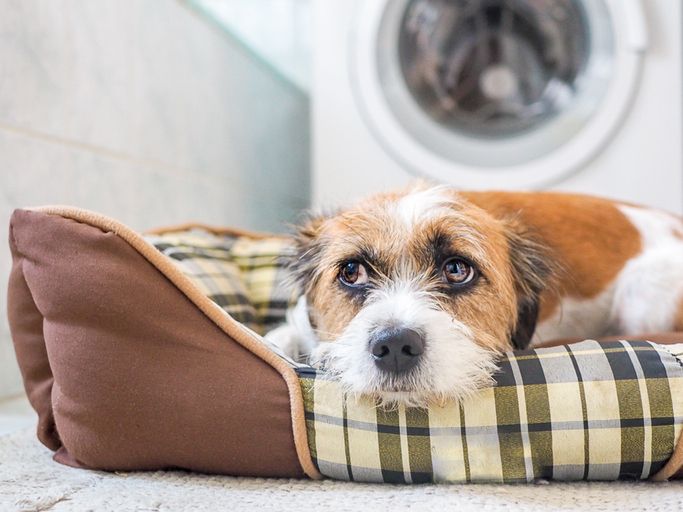Anxiety, and the behavior problems stemming from it, is increasingly common in our companion dogs. If you have one of these dogs, you know how heartbreaking and disruptive this can be. Anxious dogs are not comfortable. They can’t relax. Sometimes they are downright panicky. This can lead to dangerous destructive behaviors, house-soiling, and even aggression. Luckily, there are many safe and effective anti-anxiety medications for dogs that can help your quivering canine.
The trick is to find the right ones, at the right dose, and the right combination. Take detailed notes of your dog’s behaviors, and response or lack of response to any drugs and dosages tried. Your veterinarian will use this information to tweak your dog’s protocol until the desired result is achieved. It’s a process that can take some time, so be patient and work closely with your veterinarian.
What medication can and cannot do for your dog
It’s important to mention that medication alone is not likely to be a magic bullet, miraculously turning your anxious dog into a calm, confident, well-mannered one; however, it drastically enhances the effectiveness of desensitization to triggers and behavioral modification – the mainstay of treatment and long-term management of anxiety-associated behavior issues.
Many highly anxious dogs fail to show the kind of progress in training that is typical for dogs without anxiety; that’s because anxiety, fear, and panic impair a dog’s ability to focus and learn. Anxiolytic (anxiety-reducing) medications ease the symptoms of anxiety, fear, and panic, allowing your dog to absorb and learn during desensitization and behavior modification exercises. The combination of medication and behavior modification, under the direction of a force-free trainer and veterinarian or veterinary behavior specialist, is the gold standard for treating canine anxiety.
Types of Anti-Anxiety Medications for Dogs
There are several classes of drugs used for anxiety in dogs. Some are long-acting and meant to be used daily. Others are short-acting and meant to be used situationally as needed, although they can be used daily in combination with a long-acting medication.
Most of the drugs used for anxiety in dogs are prescribed off-label, meaning the U.S. Food & Drug Administration (FDA) has not determined the safety and efficacy of the medication for the intended purpose.
Don’t let off-label use be a deal-breaker for you. These medications have been used safely and effectively in veterinary medicine for decades. Your veterinarian should have a conversation with you regarding off-label drug usage so you can give informed consent, and you’re ready to get started.
When multiple medications are necessary to achieve the desired result, drugs from different classes can be safely combined. This enhances their beneficial effects without doubling up on side effects. Never use two drugs from the same class at the same time.
We’ll take a look at each of the main classes of drugs used for anxiety in dogs, which are:
Selective Serotonin Reuptake Inhibitors (SSRIs)
The drugs that belong to this class and are commonly given to dogs are:
- Fluoxetine (Prozac)
- Paroxetine (Paxil)
- Citalopram (Celexa)
- Sertraline (Zoloft)
Serotonin is a neurotransmitter highly involved in mood and emotions. It is known to produce calm and lessen overactive responses to normal stimuli. SSRIs decrease the reabsorption of serotonin, resulting in increased amounts circulating in the brain, which helps manage anxiety, aggression, and obsessive-compulsive behaviors (e.g., self-mutilation by licking or chewing, flank sucking, tail chasing, pacing/circling, incessant barking) in dogs.
SSRIs are long-acting medications that are prescribed for dogs with generalized anxiety issues needing help on a daily basis. They generally take four to six weeks to reach full effect, so shorter-acting anxiolytic medications are usually prescribed with them in the beginning.
Never use an SSRI with a TCA, nor use two SSRIs at once, as this can result in serotonin syndrome (see sidebar). If you don’t see the desired result from the first SSRI medication you try, your vet should guide you through tapering your dog off the first medication before prescribing another.
Tricyclic Antidepressants (TCAs)
The drugs that belong to this class and are commonly given to dogs are:
- Clomipramine (Clomicalm)
- Amitriptyline (Elavil)
TCAs affect several different neurotransmitters, including serotonin, resulting in increased calm and dampened panic responses. They are long-acting medications given daily to help manage anxiety and obsessive-compulsive behaviors in dogs. They do not work for aggression. TCAs usually take three to four weeks to maximum effect. Do not use with an SSRI, and never use more than one TCA at a time. Do not stop abruptly. Always taper off these medications.
Benzodiazepines
The drugs that belong to this class and are commonly given to dogs are:
- Alprazolam (Xanax)
- Clonazepam (Klonopin)
- Lorazepam (Ativan)
- Diazepam (Valium)
Benzodiazepines are fast-acting (60 to 90 minutes), short duration (4 to 12 hours), anxiolytic medications that promote calm by increasing the effects of gamma-aminobutyric acid (GABA), the main inhibitory neurotransmitter in the central nervous system. They can be used alone or in combination with other classes of behavior-modifying drugs. They can be used “as needed” for situational triggers, or included as part of a daily multi-drug protocol.
Benzodiazepines are federally controlled drugs (meaning there are legal limits on their prescription). Physical dependence with increasing dose tolerance is unfortunately a possibility when benzodiazepines are used long-term. To avoid withdrawal symptoms (confusion, vocalization, tremors, twitching, seizures, and death), always slowly taper off these medications after long-term use.
Serotonin Antagonist and Reuptake Inhibitors (SARIs)
Only one drug belongs to this class that is commonly given to dogs:
Trazodone is pretty much the only SARI used in veterinary medicine. SARIs keep more serotonin circulating by both decreasing its reabsorption and blocking its receptors. SARIs have both anxiolytic and sedative effects. They are rapid-acting (30 to 90 minutes), have a short duration (4 to 8 hours), and are non-addictive. They can be used alone, as needed for situational anxiety, or included daily as part of a multi-drug regime.
Trazodone has a wide dosage range so it will typically be started low and ramped up from there. Because SARIs increase serotonin, combining them with SSRIs and TCAs comes with a slight risk of serotonin syndrome. However, trazodone is routinely used together with SSRIs in dogs, with few reports of this.
Alpha-2 Agonists
The drugs that belong to this class and are commonly given to dogs are:
- Clonidine
- Dexmedetomidine (Sileo)
Alpha-2 agonists inhibit the release of norepinephrine (adrenaline) in the central nervous system. As inhibitors, they really work only if given before your dog gets upset. Once he’s upset, adrenaline has already been released along with its “fight or flight” response, and it’s too late.
Alpha-2 agonists are given prior to stressful situations known to invoke fear in your dog (such as veterinary visits or any situation that tends to trigger your dog’s separation anxiety, noise phobia, fear aggression, or leash reactivity). Onset is rapid (30 to 90 minutes), duration is short (2 to 4 hours), and they are safe to use with most other anxiolytic medications. As such, they can be added to a daily multi-drug regimen.
Anticonvulsant/neuropathic pain reliever
Only one drug belongs to this class that is commonly given to dogs:
Gabapentin is frequently used in combination with other anxiolytic medications for its mild sedative effect. It works by blocking certain biochemical channels in the brain, which calms overstimulated neurons, helping lessen feelings of anxiety. Gabapentin takes effect within 1 to 2 hours and lasts 6 to 8 hours. There is a wide dose range. Your veterinarian will likely start with a low dosage and increase the dose as needed. It can be used situationally, often in combination with trazodone, or it can be added to a daily multi-drug regime.
For more information about gabapentin, see “Gabapentin for Dogs: What You Should Know,” WDJ April 2021.
Be persistent when finding the right anti-anxiety medication for your dog
Finding the right medication (or combination of medications) and the right doses for your dog’s anxiety can be challenging. If a medication is not working well enough and maximum dose has not been reached, sometimes simply increasing the dose may work, assuming the side effects aren’t too bad. Other times a different drug from the same class will work better. Combining medications from different classes is often the ticket. And remember, SSRIs and TCAs take weeks to reach full affect, so adding a short-acting drug in the beginning is always helpful.
Here are some examples of how a case may be managed:
A dog with separation anxiety might be started on fluoxetine daily, with alprazolam as the short-acting medication for the first 4 to 6 weeks. If this isn’t working, the veterinarian may add gabapentin, or discontinue alprazolam and add trazodone. At 6 weeks, if the desired effect has not been achieved, the vet may increase the dose of fluoxetine and add clonidine. If this doesn’t work, fluoxetine may be tapered off and a different SSRI or TCA started as the long-acting daily medication.
A dog with generalized anxiety who is also reactive on leash (see “On-Leash Aggression)” may do well with a daily SSRI or TCA, and clonidine given an hour before going for walks.
Trazodone combined with gabapentin is frequently used for fear and anxiety associated with veterinary visits. If this isn’t enough, clonidine or dexmedetomidine may be added.
Fortunately, no matter what your dog’s issues are, there are many possible medications and medication combinations available to try, with the simple goal of finding what works best for your dog with the least amount of side effects.
Serotonin Syndrome
Serotonin syndrome is what happens when there is too much serotonin floating around in the brain. It can happen either by accidental overdose of one serotonin-enhancing medication or inadvertently when two or more serotonin-enhancing medications are used together. It is potentially life-threatening so it’s important to recognize the early signs.
Initially, the dog may seem overly sedate. This is followed by panting, confusion, disorientation, agitation, vocalization, vomiting, and diarrhea. Without intervention, next comes rigid muscles, tremors, seizures, coma, and death.
If you have any feeling this may be happening, seek veterinary attention right away. Give your veterinarian a list of all medications and supplements your dog is on, along with dosages. Treatment is mostly supportive and usually requires hospitalization for 12 to 48 hours.
Here are medications/supplements most commonly involved in serotonin syndrome in dogs:
SSRIs (fluoxetine)
TCAs (clomipramine)
SARIs (trazodone)
MAO inhibitors (selegeline)
Opioids (tramadol)
Tryptophan (found in over-the-counter [OTC] supplements
Chlorpheniramine (an OTC antihistamine)
Dextromethorphan (present in some OTC cough suppressants)
St. John’s Wort, ginseng, griffonia seed extract (herbal)
Potential Alternatives to Medication
Some owners prefer a more natural approach to their dog’s health, avoiding long-term prescription medications if at all possible. Here’s a list of things that are worth trying, either alone or in combination:
Most Commonly Prescribed Medications for Dogs with Anxiety
| Class | Sample Medication | Onset | Duration | Indications | Contra-indications | Cautions | Side Effects | Used |
| SSRI | Fluoxetine | Slow, 4-6 weeks | Long, 24-48 hours | Aggression, anxiety, phobias, compulsive behaviors | Seizures, liver disease | Diabetes, bleeding disorders; taper off | Anorexia, vomiting, diarhea | Once daily, alone or in combination |
| TCA | Clomipramine | Slow, 3-4 weeks | Long, 24-48 hours | Anxiety, compulsive behaviors | Thyroid disease, seizures, MAO inhibitors, male breeding dogs | Cardiac disease; taper off | Vomiting, diarrhea, or constipation | Once or twice daily, alone or in combination |
| Benzodiazepine | Alprazolam | Rapid, 30-60 minutes | Short, 2-6 hours | Anxiety, phobias, fear | Liver disease, glaucoma | Kidney disease, physical dependence; taper off | Sedation, wobbliness | Two to four times daily as needed, alone or in combination |
| SARI | Trazodone | Intermediate, 1-2 hours | Short, 2-8 hours | Anxiety, sedation | MAO inhibitors | Cardiac disease, kidney disease, liver disease, bleeding disorders | Increased appetite, mild GI upset | Two to three times daily as needed, alone or in combination |
| Alpha-2 agonist | Clonidine | Rapid, 30-90 minutes | Short, 2-4 hours | Anxiety, fear, panic | If already agitated | Cardiovascular disease, kidney disease | Sedation, dry mouth, constipation, low heart rate | One to four times daily as needed, alone or in combination |
| Anti-convulsant, neuropathic pain reliever | Gabapentin | Intermediate, 1-2 hours | Intermediate, 6-8 hours | Anxiety, fear | None | Kidney disease; taper off | Sedation, wobbliness | Two to three times daily, usually in combination |


